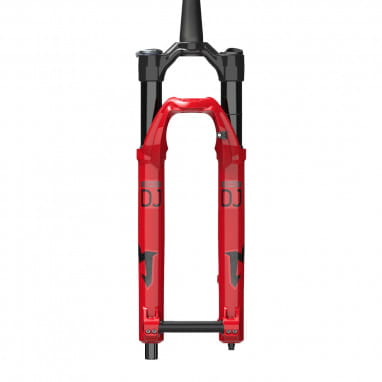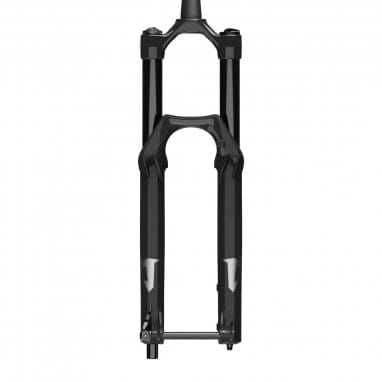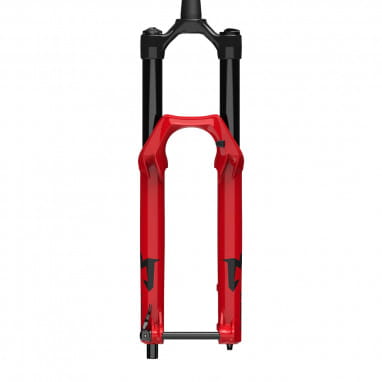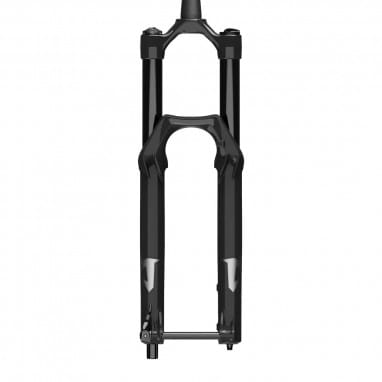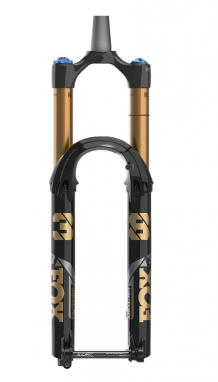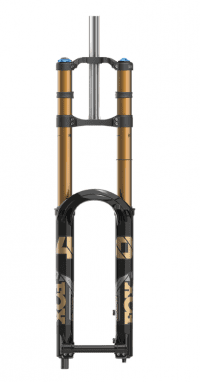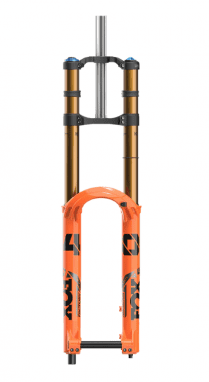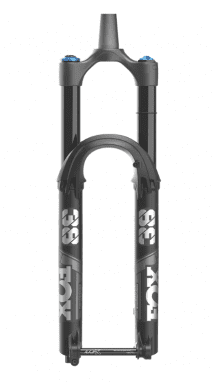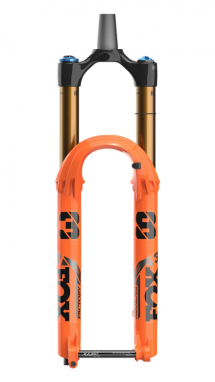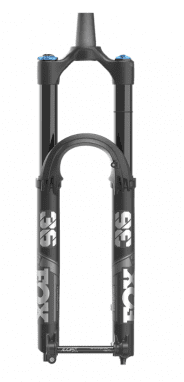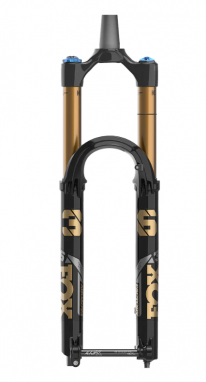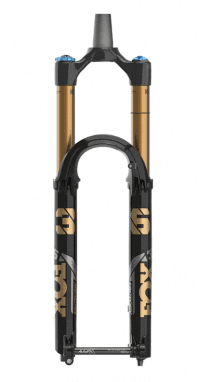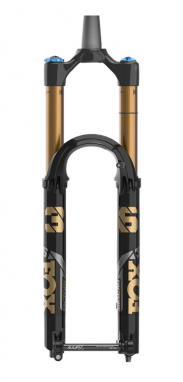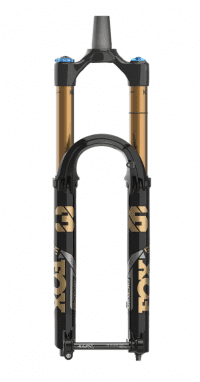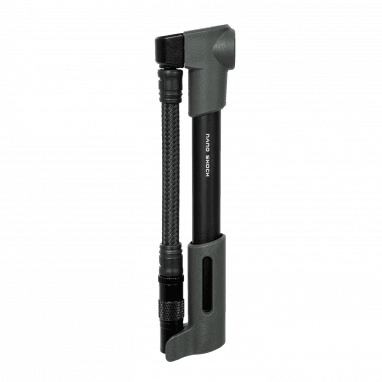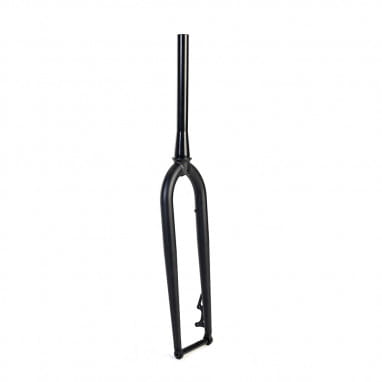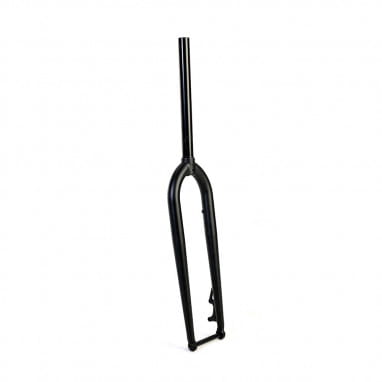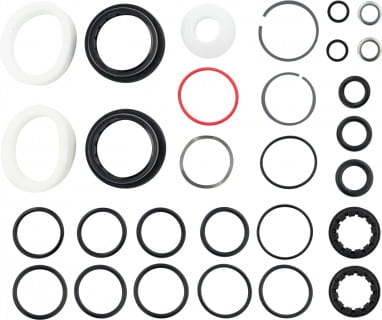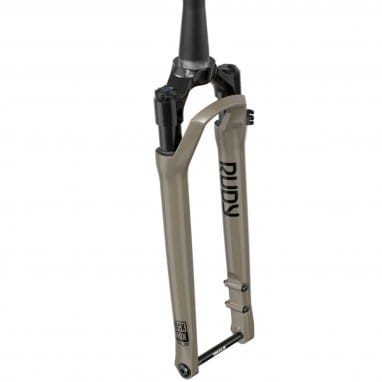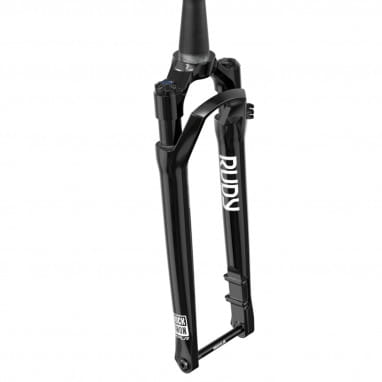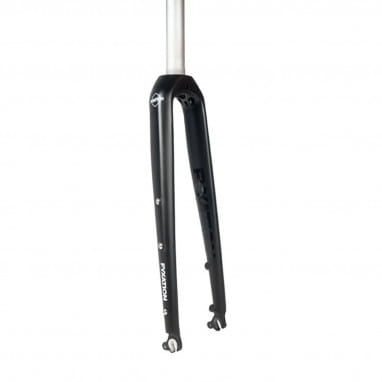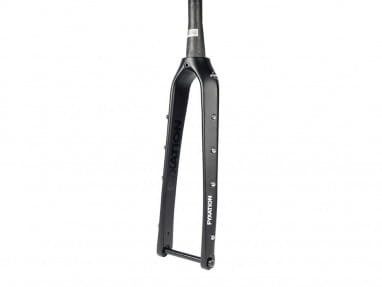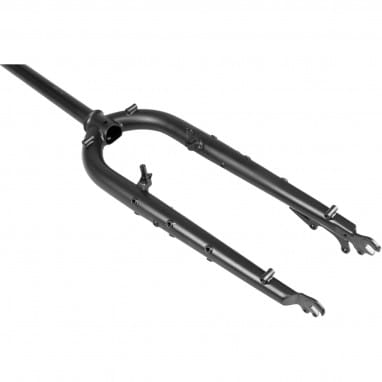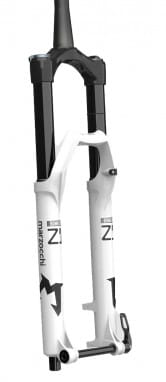"Hurry, children, come to the table...!" No, don't worry, you haven't strayed into the cutlery department! Your bike needs a fork, unless you ride a unicycle. The fork has three main functions: It holds the front wheel in place. It affects how your bike steers. And it can provide a huge amount of comfort with a suspension element. In our shop, you can buy high-quality suspended and unsuspended forks that offer you maximum safety in all riding situations. We not only offer forks with different brake mounts, but also for different wheel sizes. Here you will first find out what a rigid fork can do and then when a suspension fork is the better choice. Finally, you'll learn how to choose the right fork for your bike.
What is a rigid fork and which bike is it suitable for?
You will find a rigid fork mainly on race bikes, cross bikes and gravel bikes. These forks are made of aluminum or carbon and they are not additionally damped. Efficiency is what counts here first and foremost, a suspension fork would dampen away valuable watts that a fast cyclist would rather put on the road. In addition, a suspension fork is also not absolutely necessary for the areas of use of these bikes, as they mostly stay on well-built roads. The additional weight that a suspension fork brings with it is another counter-argument.
For a city bike or a basic touring bike that you just ride to the bakery and back, a suspension fork is simply not necessary.
Fixies or singlespeed bikes are, just like urban bikes, minimalistically equipped. Here, a suspension element is omitted, because it would only unnecessarily weigh down the bike and disrupt the clean look.
Generally, bikes that offer a direct ride feel and allow efficient pedaling do without additional fork damping, they have a rigid fork.
Advantages of a rigid fork:
- Efficient biking
- cheap
- direct feel
- low weight
- low maintenance
What is a suspension fork and on which bike does it make sense?
Mountain bikes are the classic application of a suspension fork. Most trekking bikes also have suspension forks. There are also suspension forks on dirt bikes. A suspension fork contains a damper that allows the front wheel to react flexibly to the surface it is rolling over.
Suspension forks thus not only guarantee more comfort. They also absorb shocks that would make you "tear" the handlebars without damping, the suspension compensates for unevenness and thus ensures good control in all riding situations. The suspension fork allows you to ride trails on a mountain bike or dirt bike that would otherwise be unrideable for most bikes. On a trekking bike, the shock absorber is primarily designed to minimize vibrations that reach your arms and thus prevent fatigue and cramped arms. Unlike a rigid fork, a suspension fork makes the steering more or less "spongy."
Suspension forks come with various suspension systems. The simpler and usually less expensive suspension forks rely on a steel spring in an oil bath. Adjusting the hardness of the suspension here is simply a matter of replacing the spring inside the fork. In addition, the rebound can often be adjusted, which determines how fast or slow a suspension fork springs. Higher-quality forks often rely on an air cartridge. Here, the suspension can be precisely adjusted to the rider's weight and preferences, so that an optimal tuning can be made. These forks are equipped with various adjustment options, so you can not only adjust the rebound damping, but also, for example, the high- and low-speed compression stages. Elastomer dampers are now only found on inexpensive suspension forks. Since they have a very short service life, among other disadvantages, they are hardly ever installed anymore.
On all-mountain, enduro, and other suspension bikes, it's increasingly common to find a lockout, a control that lets you set the suspension fork rigid. On climbs or slippery surfaces, the suspension can be locked out and propulsion improved, no energy is lost, and you don't start bobbing in the saddle.
How much suspension travel do you really need?
Mountain bikes and trekking bikes bring different suspensions, how much travel (or dive) makes sense depends on what surfaces you want to ride on, or what type of MTB you have. On a trekking bike 40 to 80mm travel is common, on a marathon or XC hardtail you will find around 100mm travel. Top of the range are downhill bikes with 200mm of travel.
Here you decide - do you want maximum comfort, even if it comes at the expense of efficiency?
>For more information and a comprehensive suspension fork buying guide, just click over to our suspension forks!
Advantages of a suspension fork:
- more comfort
- improved directional stability
- off-road capability
- enables tricks, jumps and drops
What wheel sizes are bike forks for?
Every bicycle has a fork, even on a 12 inch children's bike the front wheel is held by a fork. Forks are therefore available in principle in all frame sizes in which there are bicycles. In principle, because they are usually only sold individually from 26 inches. You can find forks in the common sizes 26 inch, 27.5 inch, 28 inch and 29 inch here in the shop.
Fixed forks are available for one tyre size or for a certain range of tyres, so they can be combined with different wheels. The specifications of the fork will tell you what will fit.
Suspension forks are offered for all common adult wheel sizes or bikes on the market. Whether MTB, city bike or touring bike, there is a suitable suspension fork for all types. In the city and touring sector, 28 inch suspension forks are usually used. In the mountain bike sector, on the other hand, there is a greater diversity. Here, forks with 26, 27.5 or 29 inches are used.
Bicycle forks for e-bikes
Bike forks for bio-bikes and e-bikes do not differ in design at first glance, however, as with other bike parts, there are special e-bike versions. E-bike forks are built more robustly so that they can permanently bear the higher weight that an e-bike brings with it. The higher speeds also mean greater stress on the material, and braking maneuvers in particular demand a particularly durable design.
This is what you should know about bike forks
-
The fork has to fit!
Somehow the fork has to fit the frame, here there are different designs that are NOT compatible. The steerer tube must fit to the head tube of the bike, there are not only different outer diameters (such as 1 inch, 1-⅛ inches, etc.), and different stem lengths, but also different systems such as thread, Ahead or Tapered. In the specifications of our bike forks you will find exact details about the features that each product brings.
If you want to buy a new fork, it should fit the wheel size of your bike. But it's not just the diameter that counts here, i.e. the wheel size. The tire clearance or the maximum tire width of the fork determines how thick your tires can be.
-
The axles
Not only does the fork have to go on the frame, the wheel has to go on the fork as well. That's why dropouts (the lower ends with the mount for the axle) are built for different axles.
-
The brake mounts
.
On the fork, either the front rim brake or a disc brake is mounted. The fork has the appropriate mounts for this ex works.
-
Fork Geo - What is the caster?
The caster angle is the slant of the axle in relation to the road surface. It affects the steering characteristics of the bike, a large caster provides very good straight-line stability, but requires more force to steer. A small caster angle makes the bike easier to steer, but it does not keep track as well. You can choose the caster of your new fork and thus its characteristics according to your preferences. The less a fork is bent (called fork bend or rake), the greater the caster will be.
-
Does a suspension fork make sense on a touring or city bike?
The installation of a suspension fork significantly increases the ride comfort and so suspension forks can also be found on numerous touring and city bikes. However, they not only buffer bumps, but also your movements. This means that speed and range cost you more power. Therefore, you should make sure that the suspension element does not have too much travel and, in the best case, can be locked out. This way, you can simply lock out the fork on rides where you do not need suspension and the efficiency will suddenly improve. Since no energy is absorbed in the suspension when you pedal, the result is optimal power transfer.
-
What is a lock-out?
With a suspension fork with Lock-Out you can block the suspension element, thus making the suspension fork a rigid fork. This function is very convenient on trekking bikes or mountain bikes, because so you can adapt your bike to the condition of the ground. On rough ground you can treat an extra portion of suspension, on smooth road you will make better progress.
-
Maintenance and care
The suspension fork is a sensitive component of your bike. From time to time, the suspension elements on your bike should be serviced. Regular replacement of seals and oil is essential for consistent performance. Air-sprung forks have to be readjusted with a shock pump every now and then. For a comprehensive maintenance we offer you a wide range of care and maintenance products, new seals and damper pumps in our shop. An annual professional fork service is highly recommended.
-
Lowrider eyelets
Most notably on trekking bike forks, there are additional threaded eyelets that allow you to attach lowriders, or fork racks.
How do you find the right fork for your bike?
- Do you want a suspension fork or a rigid fork?
- What wheel size is your bike?
- How wide should your tire be, how much clearance do you need?
- Which fork geometry fits your bike? Keyword caster ...
- Which brake mount do you need?
- Which axle do you want to mount? Which dropout do you need?
If you want to buy a suspension fork, these additional questions will help you choose:
- Which suspension fork system do you want? Air cartridge or steel spring?
- How much suspension travel do you need?
Buy the right fork from the online shop
In our shop, we not only offer you a wide range of rigid forks and suspension forks from Rock Shox & Co., but also a large assortment of accessories, tools and shock pumps, so that you can optimally maintain your suspension fork. You can also find small parts and adapters for your suspension fork here.
There are many manufacturers on the suspension fork market that have made a name for themselves over the years and have achieved cult status. The top dogs in the mountain bike sector are undoubtedly Rock Shox and Fox. But many other companies are gaining popularity as well. For example, there are suspension fork manufacturers Marzocchi, Manitou or rigid fork manufacturers Salsa, Point-Racing and Surly. Of course, BMO bike shop also has other bike parts like wheels, frames and handlebars. We have many different fork models and bikeparts for you in stock, enjoy browsing!
